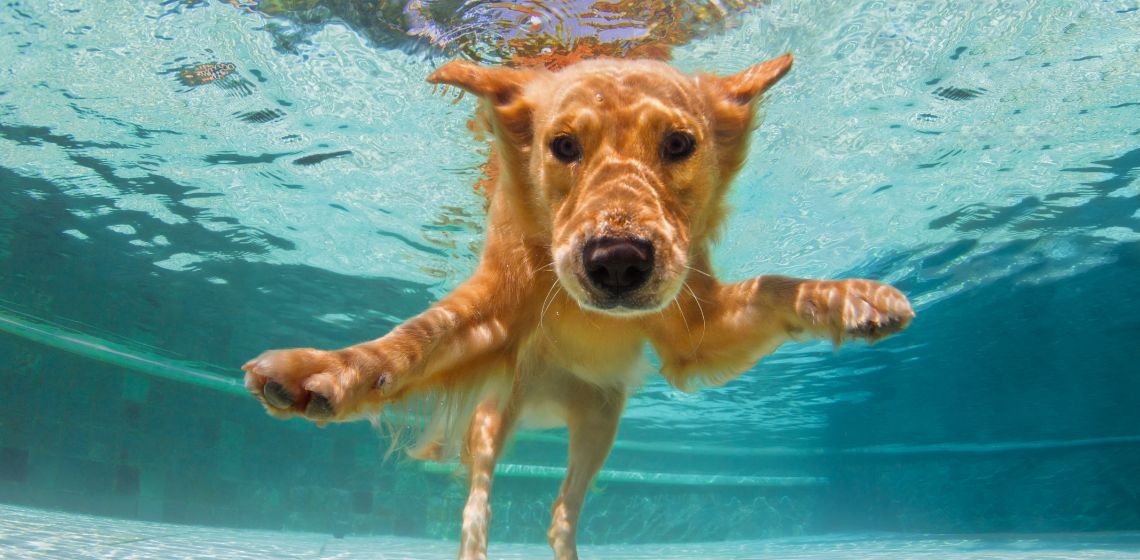Table of Contents
Assessing your dog’s swimming ability
Before allowing your dog to take a plunge, assessing their swimming capabilities is important. Contrary to popular belief, not all dogs are natural swimmers, and some may be fearful of water. Breeds with short snouts, such as Bulldogs and Pugs, may find it more challenging to keep their heads above water, while breeds with heavy coats may become weighed down when wet. Additionally, factors such as age, health condition, and previous experiences with water can influence a dog’s swimming ability.
Veterinarians advise gently introducing water activities to gauge your dog’s comfort level and swimming proficiency. Start in shallow, calm waters where your dog can touch the bottom, and provide reassurance and encouragement throughout the process. If your dog displays signs of distress or discomfort, such as excessive paddling, reluctance to enter the water, or panic behavior, it’s best to refrain from further water activities until they feel more confident.
Supervision is key
Just as you wouldn’t leave a child unattended near water, the same applies to your canine companion. Regardless of your dog’s swimming prowess, accidents can happen and swift intervention is crucial in preventing tragedy. Even experienced swimmers can tire quickly or encounter unexpected obstacles, such as strong currents or submerged hazards.
Veterinarians emphasize the importance of active supervision when dogs are near water. This means always keeping a close eye on your dog, avoiding distractions such as mobile phones, and being prepared to intervene if necessary. If you’re unable to provide constant supervision, consider using a secure fence or enclosure to restrict access to bodies of water when unsupervised.
Invest in proper-fitting safety gear
For dogs that frequent the water, investing in appropriate safety gear can provide an added layer of protection. Canine life jackets, specifically designed to keep dogs buoyant and afloat, are recommended by veterinarians for dogs of all swimming abilities. When selecting a life jacket, ensure it fits snugly but comfortably, allowing for freedom of movement without chafing or restriction.
Additionally, consider equipping your dog with a brightly colored or reflective collar or harness, especially in low-light conditions or when swimming in areas with boat traffic. This enhances visibility and makes it easier to locate your dog in the water.
Know the risks of waterborne hazards
While the allure of a refreshing swim may be tempting, it’s essential to be aware of potential waterborne hazards that can pose a threat to your dog’s health and safety. Bodies of water, whether natural or man-made, can harbor a variety of dangers, including:
- Strong currents: Even seemingly calm bodies of water can conceal strong currents beneath the surface, capable of sweeping both dogs and humans away. Exercise caution when swimming in unfamiliar waters and avoid areas with visibly fast-flowing currents or undertows.
- Submerged hazards: Underwater obstacles such as rocks, tree branches, or debris can pose a risk to dogs, especially when diving or jumping into the water. Always inspect the area for potential hazards before allowing your dog to swim and avoid areas with sharp or jagged objects.
- Blue-green algae: Certain bodies of water may be contaminated with harmful algal blooms, known as blue-green algae, which can produce toxins lethal to dogs if ingested or absorbed through the skin. Clinical signs of blue-green algae poisoning include vomiting, diarrhea, weakness, and seizures. If you suspect your dog has been exposed to contaminated water, seek veterinary attention immediately.
- Water pollution: Pollution from chemicals, sewage, or agricultural runoff can contaminate water sources and pose a risk to both dogs and humans. Avoid allowing your dog to swim in bodies of water with visible signs of pollution, such as foul odors, discolored water, or floating debris.
- Infectious Diseases: Standing water can harbor dangerous infectious diseases like Leptospirosis or can even transmit gastrointestinal parasites. Ensure your pup has appropriate vaccinations before hitting the lakes and rivers and always notify your veterinarian if something seems amiss with their health.
Practice safe swimming etiquette
In addition to safeguarding your dog against potential hazards, practicing safe swimming etiquette is essential for promoting a positive and enjoyable experience for everyone involved. Consider the following tips recommended by veterinarians:
- Choose dog-friendly swimming areas: Opt for designated dog beaches or parks that permit canine swimming and provide amenities such as waste disposal stations, freshwater sources, and shaded areas for rest.
- Observe leash laws: Respect leash laws and regulations in public areas, always keeping your dog on a leash or under close control to prevent conflicts with other dogs or wildlife.
- Clean up after your dog: Be a responsible pet owner by promptly removing any waste left by your dog and disposing of it properly. Not only is this courteous to others, but it also helps to maintain cleanliness and hygiene in shared swimming areas.
- Be mindful of other swimmers: Respect the space and comfort of other swimmers, both canine and human, by avoiding overcrowding and practicing common courtesy. Keep your dog under control and prevent excessive barking or disruptive behavior.
Conclusion
In conclusion, swim safety for dogs encompasses a combination of proactive measures, vigilant supervision, and responsible behavior on the part of pet owners. By assessing your dog’s swimming ability, providing appropriate safety gear, and being aware of potential hazards, you can help ensure that your canine companion enjoys aquatic activities safely and responsibly. Remember, prevention is key, and a little preparation goes a long way in keeping your furry friend happy, healthy, and secure around water.

Dr. Paula Simons is an Emergency and Critical Care Veterinary Resident who aspires to be a veterinary criticalist. Dr. Simons is passionate about supporting pets and humans during their times of need. She has a special interest in critical care nutrition, trauma, and pain management. In her free time, she loves plant shopping, hiking, and traveling. She has volunteered in several different countries to help animals in need. She has two cats, Moo and Kal.








